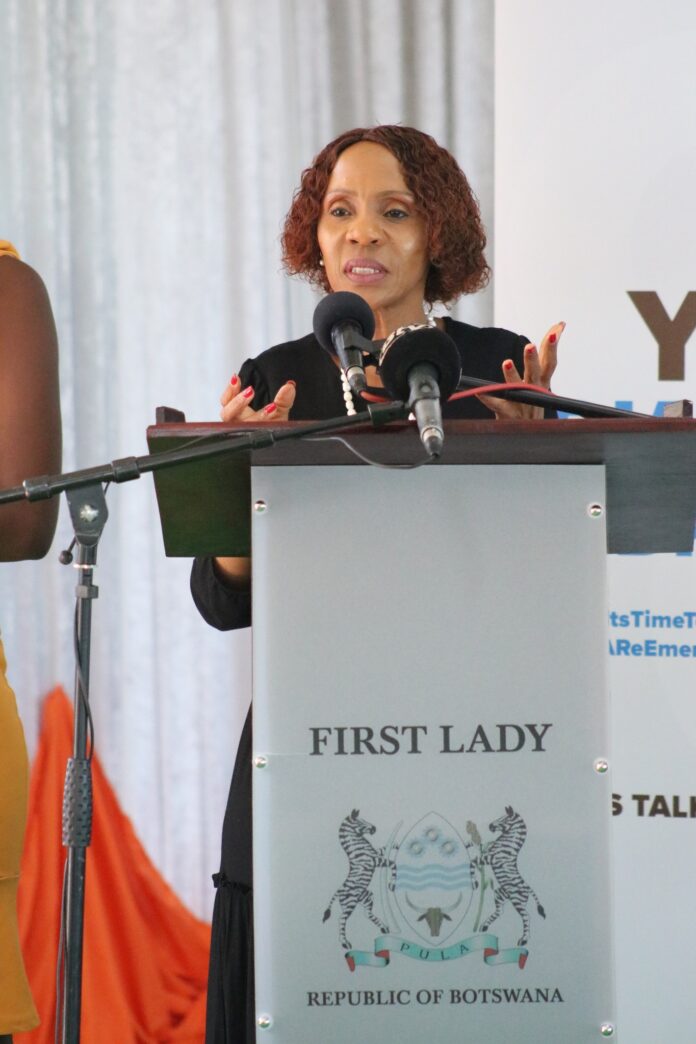Botswana: The First Lady, Ms Neo Masisi, recently speaking during the “Parents Dialogue on Drug Use” she hosted in Francistown, urged Parents and other stakeholders to come up with measures and interventions to stem the rising use of substance abuse in Botswana.
She lamented that drugs were easily accessible, even shockingly, among Primary School going children and the reasons mostly being peer pressure, lack of parental support and unstable families lead young people to alcohol and drug use.
The audience was also told that out of 1660 drug cases reported in 2019, 1440 involved youth. In 2020 cases increased to 2060, and 1780 were Youth, while in 2021, there were 1819 cases, of which 1603 were youngsters.
These shocking statistics were shared by the Drug Law Enforcement Agency Coordinator, Pearl Ramokoka, and she further mentioned that drug misuse remained a problem as 83% of reported cases were Youth aged between 10 and 39 years, thus including Primary School pupils.
Furthermore, Sbrana Psychiatrist Hospital in Lobatse reported registering 231 drug-use patients in 2021, and the number shot to 731 in 2022.
In response, may I begin by thanking the First Lady Mmarona Neo Masisi for her great and courageous steps in the fight against substance abuse in Botswana, and most particularly among students and Youth.
Secondly, our appreciation to Schools, Health Institutions and Law Enforcement Agencies for their continued fight and programmes against substance abuse, delinquency and crime in schools and the country at large.
Parental involvement against substance abuse should, by all levels, be part of a wider network and partnership strategy, while seeking to prevent and reduce student drug use through isolated programs that focus on drug issues only will never be helpful.
This is because substance abuse is not an isolated challenge but is related to a range of factors that can impact young people’s learning, development, mental health and other life outcomes. As a result, a whole school, family and community approach is key for a coherent and sustainable framework for drug prevention strategies through policy, curriculum, student and family welfare, pastoral care, effective education stakeholder engagement, incident management, etc.

Besides substance abuse, the following are a number of other pressing national and public education challenges:
1) Inadequate education stakeholder involvement
2) Low student performance and demotivated staff
3) Educational, family and social values decay
4) Teenage pregnancy, delinquency and dropout
5) Destruction of public property in schools
6) Unemployment, poverty, crime and gender-based violence
7) insignificant return on Investment in education
Recommendations
As a matter of fact, strategies are needed for solutions and as I’ve adamantly and repeatedly advocated, an effective Family and Community Education Engagement(FACE) partnership remains the Number 1 viable turnaround strategy and hidden curriculum in our public schools. At the same time, it’s also critically important to consider transforming the current PTA parental involvement model to a research-based FACE approach and global best practices for shared responsibilities.
FACE partnerships are distinct from PTA models and are defined as a child-focused approach wherein families, communities and professionals cooperate, coordinate and collaborate to enhance opportunities and success for children and adolescents across social, emotional, behavioural and academic domains ( Albright & Weissberg, 2010; Downer & Myers, 2010).
FACE will help foster the intellectual, social and moral development of children to socialise them by setting limits and teaching and promoting core values. To protect children from physical, emotional and social harm, and maintain family interaction on a stable and satisfying basis through effective communication, problem-solving and responding to their individual needs.
FACE partnership models emphasise the bidirectional relationship between families and schools and purport to enhance student outcomes through the development of cross-system support and continuity across settings.
In addition, interaction and experience of homes and school systems uniquely and together form the foundation for developmental trajectories throughout students’ educational careers.

Hence, it’s evident, consistent and convincing that families represent the first essential system and source of support for children’s learning and development and serve as a lifetime resource for kids ( Henderson & Mapp, 2002). As such, we need to acknowledge that homes and communities hold immeasurable resources for the development of children and at the centre of FACE partnerships, there must be a “Vision” committed to ensuring that:
1) Children are healthy
2) Children enter school ready to learn
3) Students are prepared to succeed
4) Youth are prepared to succeed as adults
5) Children grow up in a safe, supportive and economically ambitious environment
In conclusion, my response to the First Lady’s loud and clear call aims to cause dialogue and action for “National Unity” to partner with the government through research-based strategies and best practices to build strong FACE partnerships and transform existing PTA for student success and healthy child development.







